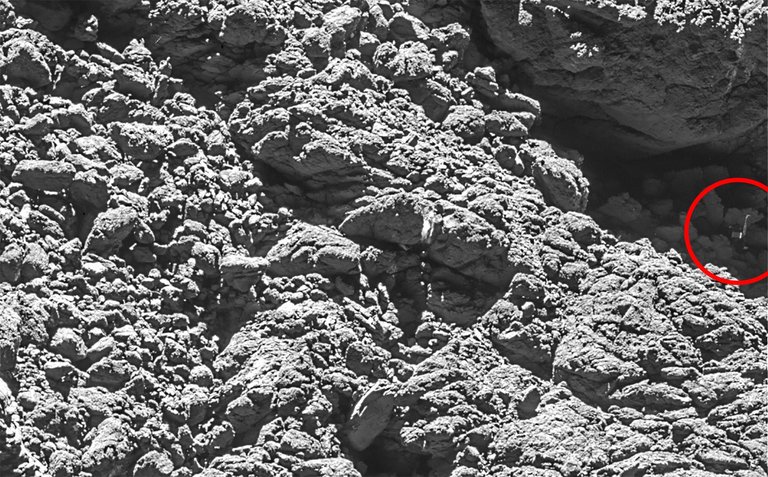
To the far right of a high-resolution observation of the comet’s surface taken on Sept. 2, the Philae lander can be seen, jammed in a dark ditch, on its side (ESA)
Like a child’s toy dropped haphazardly on a rocky beach, a small boxy object can be seen deep within a high-resolution image of a comet’s landscape. Looking closer, that shape starts to look all too familiar. Yes, it’s Philae. Rosetta has found Philae.
On Nov. 14, 2014, the small comet lander made its dramatic landing onto the dusty surface of Comet 67P/Churyumov–Gerasimenko after being released by the European Space Agency’s Rosetta spacecraft. Philae failed to fire its anchoring grappling hooks as it made first contact with the comet, causing it to bounce off the surface, sending it on an uncertain trajectory. The gravity of the comet’s bulk was just enough to prevent it from spinning into space, resulting in another series of bounces.
thanks